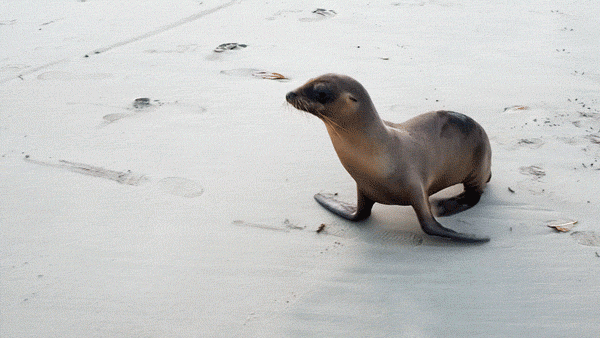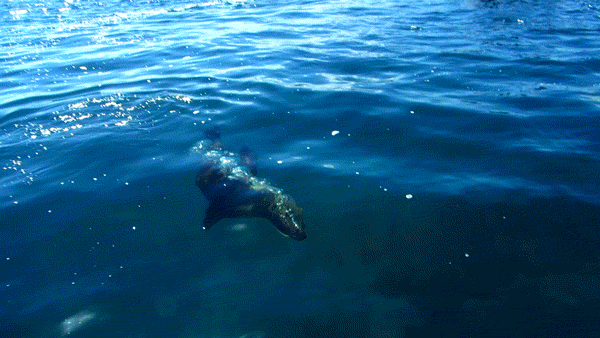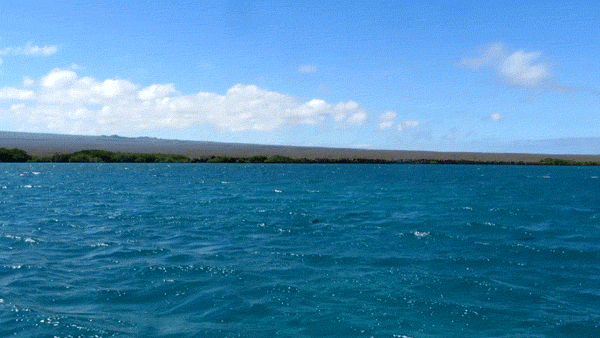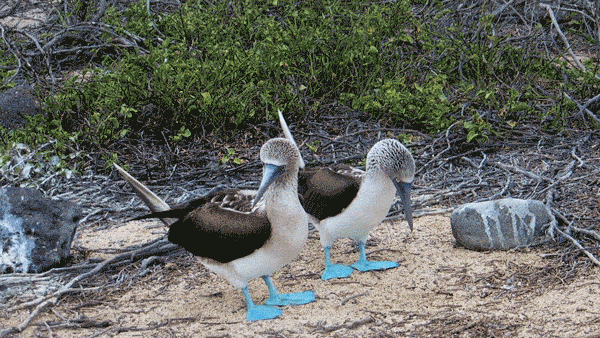Galápagos Islands – Part 2
Having already spent an incredible 6 days in and around Santa Cruz island, we had already seen our fair share of wildlife and beautiful Galápagos landscapes. However, a cruise was the thing that we were most looking forward to, as we had heard it’s the best way to experience what the islands have to offer. Due to the high prices of Galápagos cruises, and not being a place you visit very often, there was a bit of pressure to get it right first time. In order to do this we spent a good few days visiting different tour agencies to discuss last minute deals and routes before committing to anything.
Choosing a Boat & Itinerary
Unless you have the luxury of going on a 16 day cruise to see it all, most people have to make the tough decision of visiting either the Western islands of Isabela and Fernandina or the Northern and Southern Islands of Genovesa and Española. Both routes offer the chance to see different endemic species so it ultimately came down to what we wanted to see and experience. We found the decision making a little stressful, especially when you are about to part with a huge chunk of travel budget, but we knew it would be more than worth it. We decided to visit the Western islands, as they were more remote and would offer more varied terrain as well as the chance to see flamingoes, flightless cormorants, marine and land iguanas, turtles, sharks and potentially whales and penguins as in parts the water was much colder.
Once we were set on a route we looked for boats that offered our preferred itinerary at the best price. However, if you chose a very budget boat you often get a budget guide and itinerary, so we were advised not to go for the cheapest option to avoid disappointment. After much deliberation and with various options ranging in price, itinerary and class, we decided to book with Moonrise Travel (a very helpful agency based on Charles Darwin Avenue) and opted for the Eden yacht: a ‘tourist superior’ class boat that sleeps 16 people. The boat had 8 double rooms, an onboard chef, a bar, a sun deck, and even hot showers, so we couldn't have asked for much more for the price. Another bonus was that the Eden offered us a 5 day/5 night cruise, meaning we would board the night before giving us more time.
We boarded the boat at 8pm, and after meeting the rest of our fellow cruise members we sat down for our first delicious meal prepared by the chef. Our guide David then gave us a full brief of the next days itinerary, including what wildlife we were likely to see, so we felt well prepared as to what to expect before heading to bed. Our cabins were a decent size, with twin beds, a separate bathroom and plenty of storage. The only down side of our room was that it was positioned right next to the engine! Luckily our travel earplugs came to the rescue, and so we still got a decent nights sleep.
Day 1: Puerto Villamil
After navigating at night we work up in Puerto Villamil, a small coastal village located in the south of Isabela Island. Following an amazing breakfast of fresh fruit and pancakes we prepared our day packs and our group set off to the town in 2 small dinghies. Our first stop was the wetlands, a short shuttle bus ride to the west of the town. We were led by our guide David through mangrove forests and small sandy beaches where marine iguanas were basking in the sun. We were then shown a series of lava tunnels, and it was fascinating to hear how they had been created by a flow of hot lava that passed underneath the cooler crust during volcanic eruptions around a million years ago.
We then headed back to the port and walked along a short boardwalk to Concha de Perla, a great snorkelling spot nearby. After side stepping iguanas and sleeping sea lion pups we reached the small sheltered bay. The pool was ideally located for marine life to feed at high tide, meaning we could spot rays, sea lions, marine iguanas and various tropical fish with ease. After an hour or so of snorkelling we headed back to the boat for a hearty spaghetti bolognese prepared by the onboard chef.
Next on the agenda was a trip to the Arnaldo Tupiza tortoise sanctuary, so after taking the dingy to shore we got back on the shuttle bus and headed north of the port. Having already visited the Darwin centre on Santa Cruz we weren’t sure if we were going to see anything different. However, with David as our guide we learnt far more then we expected, and saw the interesting growth stages of the tortoises in small bottles, as well as the eggs and incubation processes. We even managed to see a couple of dominant male tortoises fight it out and try to roll each others shells over!
A short walk from the tortoise sanctuary was a small lake where we caught our first glimpse of the Galapagos flamingo. After seeing the James and Chilean flamingoes in Bolivia it was very interesting to see how much longer the Galapagos’ flamingos neck were, and how much brighter pink in colour they were. We stayed watching the flock for around half and hour as they fed on the tiny crustaceans that gives them their colour.
The day ended back at the beach in Puerto Vilamil. We swam, lazed with the sea lions and iguanas and grabbed a beer with just enough time to watch the sun go down with our fellow ship mates. It was the perfect end to our first day on our Galapagos cruise, and after boarding the boat we spent the evening eating, drinking and discussing the itinerary for the following day.
Day 2: Moreno Point & Elizabeth Bay
We woke in the morning to find ourselves in Moreno Point, a remote spot to the west of Elizabeth bay now far away from civilisation. After another hearty breakfast we boarded the dinghy and within a few minutes were dropped on the edge of a huge lava field. The black, rippled texture was like nothing we had walked on before, and David explained how the entire area was created by the volcanic lava that spread out for miles from Volcanoes in the distance. After walking carefully along the fragile rock we arrived at a series of small pools surrounded by grasses. The pools were connected to the sea through lava tunnels, and we were lucky enough to spot a turtle and a white tipped reef shark swimming in the clear shallow pools, trapped by the outgoing tide.
After an interesting hour exploring the lava fields we got back on the boat for a quick snack before heading off to our first official snorkelling destination of the cruise, just off Moreno Point. The water was much colder than in Santa Cruz or Puerto Villamil, and so we were glad to have wetsuits. The visibility wasn’t fantastic due to the silt and strong currents, but the marine life was incredible. At one point we were surrounded by as many as seven friendly green sea turtles feeding on seaweed!
After exploring the cold water for as long as we could, we got back on the boat and headed to the front sundeck to warm up in the sun. We started chatting to Angelina and Marco, a lovely swiss couple on a similar trip to ours. After about 5 minutes of chatting about the snorkelling they revealed that Marco had just proposed under water using a slate! After much excitement, hugs and congratulations we headed to the bar to order a round of piña coladas and spent a fun hour celebrating the exciting news.
We cruised for another few hours over lunch, and pulled up around mid afternoon to our next spot, Elizabeth Bay. We boarded the dinghy and made our way there, stopping at various spots on the way to see wildlife. We spotted a sea lion dozing on the rocks, who gave us a big yawn and then clumsily made his way down to the water. He then swam beneath our boat, clearly showing off his aquatic skills in the glistening water!
As we edged around the rock further we spotted a lone Galapagos penguin, a bird we had been eager to see. We learnt that it is the only wild penguin to live North of the equator due to the cold Humboldt current that flows from Antartica, making a perfect environment for them. As we journeyed to deeper waters we spotted a whole group of penguins leaping out the sea! It was an amazing thing to witness, and we sped along side them for a while before they darted off in different directions.
We then spotted a flightless cormorant basking in the sun, totally unphased by our boat, so we were able to get some great pictures. We had learnt that due to the lack of natural predators on the Galapagos, the flightless cormorants wings had evolved to become smaller due to its lack of necessity to fly. This also makes them more streamlined in water when fishing. As it was one of the unique Galapagos species we had read lots about we were really pleased that we got to see one so close.
We finally arrived at Elizabeth Bay, and as we slowly approached the sheltered waters surrounded by mangroves we spotted many turtles popping their heads up for air right next to the boat. We approached a narrow, shallow inlet, and our guide David said we needed to keep our eyes on the water and after a short wile we spotted a shoal of juvenile golden rays glimmering near the surface! They slowly drifted underneath our boat, and we managed to lower the GoPro into the water to get a better view. It was mesmerising to watch, and probably one of our favourite moments of our cruise.
After ten minutes following the golden rays we headed up into another shallow inlet where we found another group of rays, this time baby spotted eagle rays, calmly floating in the crystal clear water. We followed the shoal for a while, bumping into many turtles and sea lions fishing amongst the mangroves. With the sheer abundance of marine life around us we were completely blown away by Elizabeth Bay. What made it more special was that we were the only group there, and we were really pleased we'd chosen to explore this side of the Galapagos.
After an unforgettable few hours we headed back to the boat where one of our fellow cruise members, Raj, treated the group to a bottle of champagne to toast Angelina and Marco’s engagement. We settled in to another delicious dinner, and chatted about the amazing wildlife we'd been so lucky to see throughout the day. We were then briefed by David on Day 3 of our cruise, which sounded equally exciting.
Day 3: Tagus Cove & Espinoza Point
The next morning we woke up in Tagus cove, a small bay famed for Pirate moorings due to it's sheltered location. On landing, we spotted graffiti on a large rock, but on closer inspection we noticed that they were old name carvings from sailors/pirates, some dating back to 1836, adding more intrigue to the history of the island. As we were jumping off the dinghies we noticed that a couple of flightless cormorants had nested in the middle of the walk way. They seemed completely comfortable with all the groups having to side step around their carefully guarded eggs, and we did our best not to disturb them as we passed.
The surrounding landscape of Tagus Cove was very dry and baron, and felt quite different to the other parts of the island we'd visited. After a small trek up the hill we reached the look out point where we were treated to a gorgeous view of a blue-green crater lake. We had learnt that all the Galápagos Islands had been created by volcanic eruptions from under the sea millions of years ago. Now many had either sunk entirely or were in the process of sinking, and it was great to see a prime example of this process first-hand.
We then made our way back to the boat and changed back into our wetsuits for another snorkelling session in the cove. Again the water was pretty cold but with large puffer fish and flightless cormorants swimming amongst us we were glad we had braved it. We got back on board for some lunch and the Eden then navigated towards Espinoza Point on Fernandina island. Fernandina is the third largest, and youngest, island of the Galápagos Islands and with it’s remote location was another perfect spot for both land and marine wildlife.
Not long after we landed and had made our way onto the beach we spotted another of the endemic species - the Galapagos hawk, perched on top of a low tree so we got a really good view. As the island is teaming with marine iguanas and small snakes the hawk had a good food supply on tap. As we wondered across the beach towards the lava fields we spotted clusters of the unusual looking lava Cactus with a beautiful island backdrop.
As we wondered further we noticed that there were a number of skeletons bleached white against the black lava. Having watched the David Attenborough series recently, we had learnt that during the El Niño weather system, the right type of seaweed fails to grow meaning that many iguanas die, particularly the large ones. Although it was sad to witness this, there was an abundance of them all over the islands, and very interesting to see the natural selection process at work here on these infamous islands.
We then got back on to the boat and settled in with a few beers on the sundeck. We had been told by our crew that we were passing the equator line, marking the middle of the earth, so along with our cruise mates we went to watch the GPS navigator hit 0.00.000 and counted down as if it was New Years eve (amusing at the time!). It was a little bit of an anti-climax, but on the plus side we get to say that we've sailed over the half way mark of the world. We then settled down for dinner and briefing before heading to bed for an early night.
Day 4: Santiago & Rábida Islands
The next morning we had arrived in Egas Port on the Western side of Santiago Island. After a short dingy ride we arrived on a black sand beach and made our way over to a spot that was famed for sighting the Galápagos fur seal. Both the fur seals and sea lions are from the ‘eared seal’ family, however we were told that the noticeable differences of fur seals include thicker fur, larger ear flaps, different head proportions as well as being much smaller. After a 5 minute walk across the rocks we spotted about five fur seals dosing or trying to find themselves a good spot. They seemed far more docile than the sea lions and their thicker fur and large eyes made them seem more like friendly puppies!
After half hour or so we headed back to the beach and grabbed our snorkels. We had left the colder currents behind and didn’t need a wetsuit, so we eagerly jumped on in. As there was no sand the water visibility was great, revealing shoals of tropical fish including parrotfish, puffer fish and we even had a white tipped shark swim less than a meter past us! After 45 minutes of snorkelling we headed back to the beach and basked in the sun before heading back to the Eden for our mid morning snack.
Our next stop was Rabida, an island known for it’s striking red-coloured sand. After lunch we moored up close to the shore and took dinghies to the beach where we spotted a group of sea lions resting on the red sand. The island was deserted apart from our group, so after taking a stroll along the beautiful beach to see the sea lions we cut inland and wandered past a small turquoise salt-lake and uphill to get a view of the tranquil island from above. It didn’t take long before we were rewarded with a beautiful view of the unusual red, white and green landscape covered in cacti.
We spent a final hour or so sun bathing on the beach until it was time for us to head back and set sail to our final destination. As we cruised onwards we heard the crew shout excitedly, as apparently they had spotted a huge sunfish. We all peered over the side of the boat to get a glimpse at the oceans largest bony fish; we just wished we had been able to get a better look! After the excitement we grabbed a beer and watched the sun slowly descend over the volcano in the distance then congregated near the bar and made a toast to our fantastic crew and guide for an amazing 5 days. As it was our last night of the cruise we stayed up drinking beers and chatting with the other guys for as long as we could.
Day 5: North Seymour Island
Our final morning was an early one, as the best bird activity was at sunrise so around 5.30am we sleepily huddled onto the dingy and headed for North Seymour Island. Even before landing the noise of the birds was amazing. After getting on land we noticed the sheer number of different birds in the area, including the iconic blue footed booby, a bird which was top of our list to see on the Galapagos. There were hundreds of couples nesting, and it was great to witness them performing their typical blue-footed dance and whistling to each other.
We wondered further around the coast, taking in the various birds all around us including lava gulls, with vibrant red-ringed eyes, and magnificent frigate birds with their iconic inflated necks. Their red throats were simply amazing, and the noise they made as they banged their beaks against them echoed across the shore. Their were also lots of chicks dotted around and being fed by their parents; it was a real privilege to be on such a vast nesting site with these beautiful birds. After taking pictures and watching for a short wile we were reluctantly directed back to the dingy, marking the end of our incredible 5 day cruise.
We were dropped at the airport where we said our goodbyes to half of the group and then made our way back for our last day on Santa Cruz. After checking back into our hostel, we made plans with our cruise mates for the evening and by 7pm we were reunited again on 'cheap street' for the last dinner. We had made good friends with the other three couples, so it was great to share one final meal together. The next morning we headed off early to the airport barely able to believe what we had experienced over the past two weeks.
We had set high expectations for the Galápagos Islands, and with such big costs and planning needed it's easy to see why many might find visiting the islands too much during a longer trip. However, the six days we spent diving and exploring Santa Cruise by ourselves had been incredible, and the guided cruise had been everything we'd hoped and more. We came away feeling we had really made the most of our time there, and experienced things that we will remember for the rest of our lives. Our advice would be to believe the hype, save the cash and put the Galápagos Islands on your bucket list, you won’t be disappointed!



































































